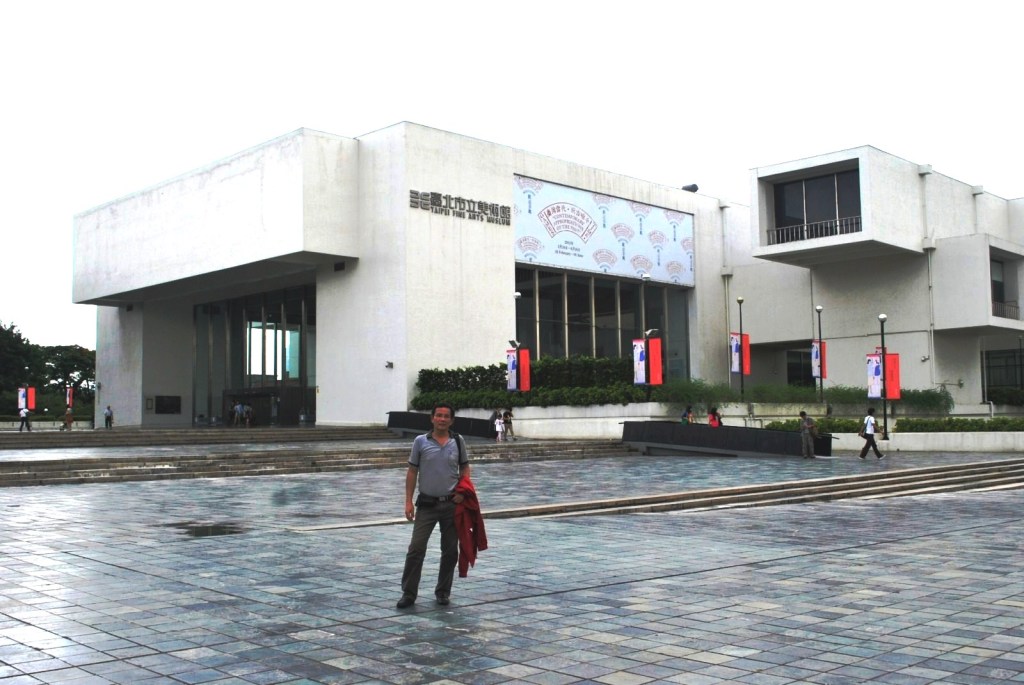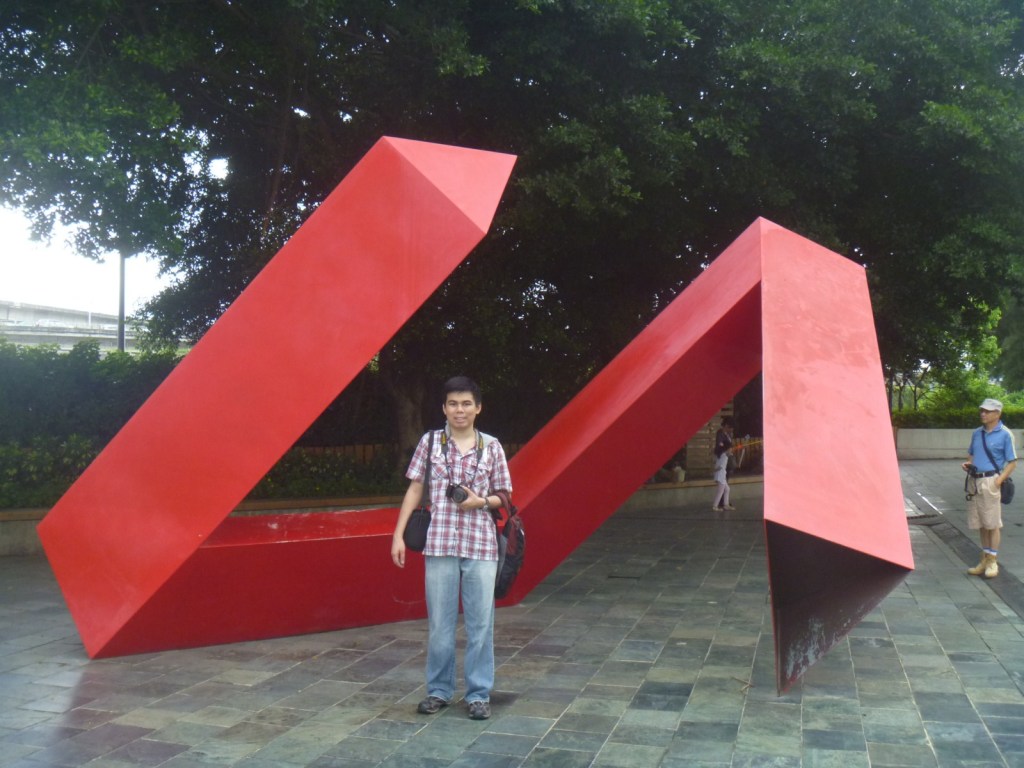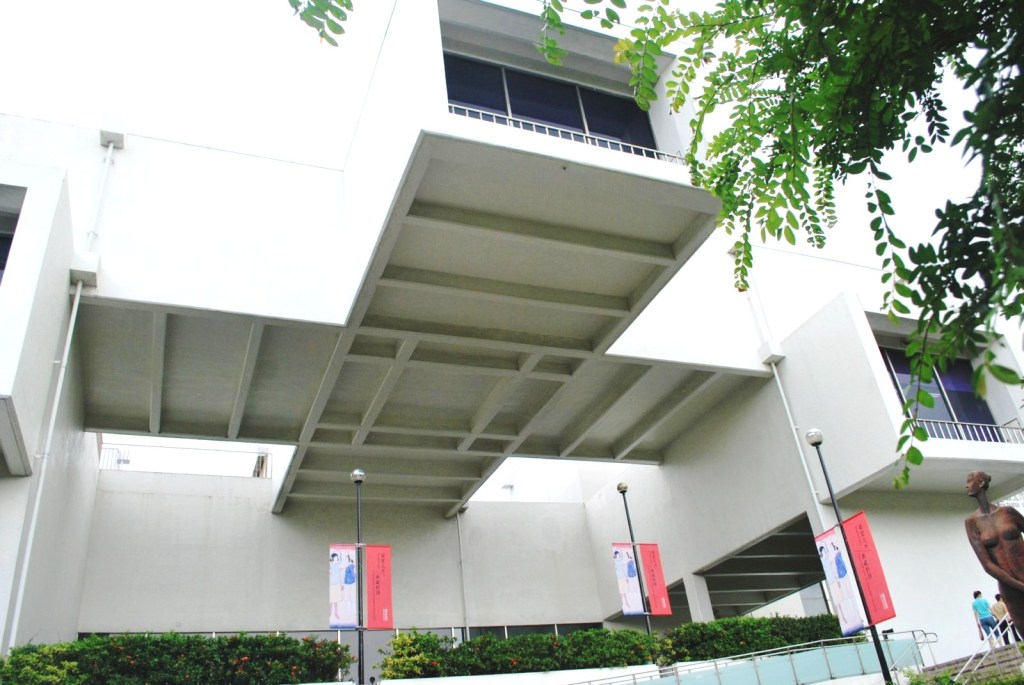From the Lin An Tai Historical House & Museum, Jandy and I proceeded to a 7-Eleven outlet for some ice cream before making our way to the 6-storey, 20,442 sq. m. Taipei Fine Arts Museum. Shaped like a pound sign, it is a traditional siheyuan courtyard with a modern edge and its shape plus the creative sculptures (notably Ju Ming’s “Taichi Arch” and Lee Tsai-chien’s “Homerun”) in front made the museum easy for us to identify from afar.
Opened on December 24, 1983, it was the first purpose-built museum in Taiwan to host modern and contemporary art exhibitions.The museum has an actual constructed exhibition area of 11,741 sq. m. with more than 4000 pieces of art works. It consists of 24 galleries and is said to be larger than the National Palace Museum in terms of interior space. The art exhibits, which include the work of international and Taiwanese artists, change every few months.
Each building floor has different arrangements, with the second floor displaying permanent collections while the third floor displays theme exhibitions. The basement is organized into 4 zones (D, E, F and G) for exhibitions and major art competitions.
Symmetrical and suspended gallery spaces are spread on each floor to form a new space where visitors can view and appreciate art. The grand windows also allow museum visitors to take in the beauteous views that overlook Yuan Shan, the Fine Arts Park Area and the surrounding environments. The building also houses audio rooms, art classrooms, gift shop (sells artwork and numerous souvenirs) and a library.
The museum’s architecture, a local adaption of the Japanese Metabolist Movement (espouses large scale, flexible and expandable structures that evoked the processes of organic growth), is infused with elements borrowed from traditional Chinese architecture, which are presented via the structure of piled brackets in the form of suspended corridors, that, together, form a tubular-shaped composition. This tube-shape is identical to the Chinese character for “fountain,” hence fostering the museum’s analogue as a live source of culture. The task of designing and construction was given over to local architect Kao Er-Pan.
We didn’t view the paid exhibits but I did visit Julian Rosefeldt‘s “World Making,” a free solo show of this much celebrated contemporary German new-media artist’s lavishly-produced 16 mm. and 35 mm. films and photo works (2001-2011). Projected onto several screens to create a panorama-like effect, his films carry the viewer off into a surreal, theatrical world whose inhabitants are caught in the structures and rituals of everyday life.
Taipei Fine Arts Museum: 181 Zhongshan North Road, Section 3, Zhongshan District, 10461 Taipei City, Taiwan. Tel: (+886-2) 2595-7656. Fax: (+886-2) 2594-4104. E-mail: info@tfam.gov.tw. Website: www.tfam.taipei.gov.tw. Open Tuesdays-Sundays, 9:30 AM-5:30 PM (8:30 PM on Saturdays). Admission: NT$30 (for adults) and NT$15 (discounted), 30% discount for group with more than 20 members.
How to Get There: Bus routes 203, 218, 220, 260, 277, 279, 310, 40, 42, 612, all exit at Taipei Fine Arts Museum station. Via MRT, take the Danshui line and exit Yuanshan Station. From here, it is a 5 min. walk to the museum.






